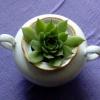Torej: TEK ali JOGGING je sestavni del fizične vadbe veliko ljudi, nekateri tečejo vsak dan, nekateri po parkrat na teden.
Na netu sem našla naslednji sestavek, ki govori o joggingu, da vam ne bi bilo treba brati mojega pametnega razpredanja o tem
Tek je najbolj razširjena oblika rekreacije. To pa predvsem iz razloga, ker je vsakemu dostopen.veliko je športov, ki so previlegij bolj situiranih ljudi. Tudi to bo ena izmed naslednjih tem. Osebno mi tek največ daje. Kako začeti z tekom ? Če ste začetnik, potem bodite potrpežljivi. Maratonci ne boste postali čez noč-ha,ha. Svoje mišice, sklepe, pljuča, srce privajajte na čedalje večje napore postopoma. Velika napaka začetnikov v vseh športih je pretiravanje. Zato torej tekači ne pretiravajmo z povečanjem števila kilometrov.Ne zgledujte se po drugih tekačih.Pomembno je da tečete redno in zmerno.Za začetek lahko izberete formulo: minuta teka-minuta hoje. Dolžina pretečene poti pa vam mora biti važnejža kot hitrost.Ko bomo zmogli preteči nekje cca. 30-45 minut v zmernem tempu se počasi iz rekreativnega tekača prelevljamo v športnega tekača. Pred začetkom teka je dobro ogreti z lahkotnim tekom in narediti vaje za raztezanje mišic in tetiv.Ogrete mišice bodo lažje inbolje opravljale svojo delo, nevarnost poškodb pa bo bistveno manjša. Tek spada sicer med najvarnejše športe.Ne priporočam, da jeste tik pred tekom ali neposredno po teku. Priporočam, da vadimo v dobrih tekaških copatih, ki bi naj imeli podplate z dobrim blaženjem. Podplat tekaške obutve naj bo dovolj debel in mehak, da amortizira udarce nog ob tla.Tecimo vsaj štirikrat tedensko.Tudi, če si že dobro pripravljen, začni vedno teči v počasnem tempu.Tekmuj sam s seboj. Ne pusti se sprovocirati,od morebiti bolje pripravljenega tekača..Uživaj v svojem tempu.Poglavitni cilji teka so:pospešiti izgorevanje odvečne maščobe,okrepiti mišičevje,srce, znižati krvni tlak zmanjševati strese in nazadnje tudi dober fizični izgled.
Sicer članek ni ravno najbolj strokoven, ampak v slovenskem jeziku nisem našla nič drugega (ali pa ne znam iskat
V angleškem jeziku najdemo dosti več, zato vam tule postrežem še z angleščino;
Jogging Away To Fitter Self
All you need to start jogging is a pair of sturdy shoes and you can be off. Jogging is easy to do, requires little equipment, is convenient and can be loads of fun. More importantly, it gives you all the benefits you get from aerobics without that much effort.
The benefits of jogging are immense. You can jog at any time of the day, morning, noon, or evening -- that suits your schedule. It also does not require company as in other sports, though you can ask your friends or partner to jog along. Nor do you need any special coaching or new skills. Jogging is absolutely non-competitive, relaxed and free from strain. It is ideal for those who feel the need to be just a little more energetic than merely walking. Jogging has no age limit - even kids can jog.
Jogging is easy to do, but has immense health benefits. It results in improving the physical condition of the heart, lungs, circulatory and digestive systems. Your heart muscles get strengthened and as a result they pump great volume of blood with a more powerful, slower beat and therefore last longer. Jogging also builds more efficient blood vessels and an increased capillary network as a whole. This, of course, lowers the blood pressure and reduces cardiac stress. It is an active way to avoid osteoarthritis, particularly of the hip joint and a practical, sure-fire way of delaying the ageing process.
Getting Started:
Well-begun is half done. This is especially true when you are beginning a fitness routine. If you plan your routine meticulously and prepare a detailed timetable, chances are that you will stick to your routine and reap the maximum benefit of your fitness plan. Before you get started, you need to keep in mind some basic points.
Don’t rush:
Never rush into a jog. In the beginning, it is best to limit yourself to fast walking interspersed with brief jogs. As the muscles, joints and ligaments become accustomed, they will be better able to handle longer or more frequent jogs. Make a progressive jogging plan and get used to the exercise gradually. Build up so that you can run 20 to 30 minutes a session, at least four times a week.
When to run:
You should choose a time that fits in most easily with your schedule. However, avoid running within 2 hours after eating. In summer, jog in the early mornings or evenings to avoid heat-related problems like dehydration, heat exhaustion and cramps.
Where to run:
You can begin and end at your own front door. But for most people running in circles takes away much of the fun and tends to become monotonous. It's more fun to run in parks, dirt tracks or even the highway. Try and invent your own routes and vary them to lend variety to your routine.
The surface:
Be careful of the surface on which you jog. The worst surface is concrete found on the pavements in almost all major cities. A smooth grassy field or a dirt road is probably the best to run on, but be careful of the hidden potholes. Or else stick to the side-paths along the road. Pick a course, which is fairly flat. A very hilly terrain may place too much strain on your legs and lungs unless you are a competitive runner.
Be careful:
Take care of hazards like traffic and movement of animals when jogging on the roads. Avoid accidents with automobiles at all costs. In fact, always try and run opposite the traffic.
Clothes:
Your jogging pants need to be comfortable, reasonably loose and suitable for the time of the year. In summer, shorts and a T-shirt or a vest will be enough. Tracksuits are not essential and their use in hot weather may even trigger heat exhaustion apart from the discomfort they may cause. They are ideal for winters. If it is very cold, several layers of clothing are better than one or two thick layers because they help trap the heat.
Shoes:
They are the most important item in the jogger's kit. Care must b taken before buying shoes for jogging.
Here’s what you should always remember:
Cushioning : The most important aspect of jogging shoes is the cushioning that they provide. The harder surface more cushioning you need in your shoe. The cushioning should be of good quality material and retain its resiliency for 1,000 km, which is roughly the lifespan of a good shoe. Avoid shoes with interior stitching as they can cause blistering.
Stable heel : The shoe must have a heel counter, which means that heel must be stable and wide.
Firm sole : The sole should not bend at the heel but should be flexible in the front and bend freely at the ball of the foot.
Good fit : They should not be tight. Try wearing them with socks before you start running. The shoes should be wide enough to take the whole foot without any overhang.
Link: Jogging away to fitter self
Pa še par linkov;
The benefits of running
Running or jogging @ Health Information Library
The Basics of Jogging by dr. George Sheenan
Jogging FAQ's
No, mislim, da bi bilo tole dovolj branja zaenkrat
Joggerji, tekači, tisti, ki vas to zanima in bi radi to počeli... razpišite se. Nekaj izhodiščnih vprašanj morda, da pomagam začet;
Uživajte v temi in teku
Sončna
















